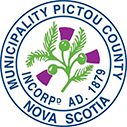Concerns voiced and solutions sought regarding safety issues at Abercrombie intersection
ABERCROMBIE, N.S. – A public meeting concerning an intersection in Abercrombie allowed residents and government to come together in hopes of making the area safer for motorists.
The Municipality of Pictou County hosted the session Tuesday at the Abercrombie Fire Hall where about 70 people heard from officials with the Department of Transportation on what safety measures are currently in place at the Abercombie and Trenton Connector Intersection.
County Warden Robert Parker told the crowd that the meeting was not about who is at fault but rather finding a solution to the problem.
“We need to keep pushing it until we get some action,” he said. “We need help from everyone to make that happen.”
Abercrombie Fire Chief Sandy MacPherson said department records indicate there have been 59 collisions at the intersection in the past 25 years and five of these have been fatalities.
About 6,800 vehicles travel through the intersection daily about nine per cent of these vehicles are trucks.
“It is getting to the point that when my guys are called out, they will say, ‘is it going to be bad?’, “he said, adding that Abercrombie Fire Department automatically calls out New Glasgow Fire Department’s rescue team to every call at the intersection in anticipation of a serious collision.
Abercrombie Fire Department brought its concerns forward to the Municipality of Pictou County and as a result, a public meeting date was set so concerned residents could hear about safety improvements that currently took place and have a chance to voice their own suggestions.

Greg Chisholm, area manager for the Department of Transportation and Infrastructure Renewal, said signals were installed at the intersection in 1991 when the fourth leg of the intersection – coming from Mount William – was constructed. It was determined at that time that stop signs were not adequate in controlling traffic.
“Lights are still sufficient to handle the current traffic,” he said. “It does not warrant grade separation and there are good sight lines.”
There were concerns expressed during the meeting about the length of the lights and how quickly they change from green, yellow and red to which Chisholm explained there are currently sensors in the ground at strategic locations that sends information to signal control.
“This minimizes the delay at the intersection and also reduces the probability of conflicts,” he said, adding that there is a backup fail safe measure in place if the signalling system malfunctions.
He said the intersection lights are tested regularly and following collisions which determined there was no issues with the operating system.
Recently, Chisholm added, there have been larger signal heads installed at the intersection and TIR is also in process of upgrading its detection system in regards to the signalling process. More signage has also been put in place to warn motorists that they are approaching an intersection.
He said some ideas brought forward at the meeting are worthy of a second look while others will not improve the situation.
- Rumble strips capture the motorist’s attention, but they create an ambient noise that could bother homeowners in the area.
- Reducing the speed limit in the area is an option, but it has to be the right reduction or it will have little impact on the driver and people often don’t pay attention to speed limit changes. The traffic authority is in charge of speed limits on roads not TIR.
- Replacing signals with a fixed time will increase the delays at the stop light and increase the potential for rear-end collisions. Environmental impacts also have to be taken into consideration with vehicles idling longer at stop lights and there is no evidence that fixed lights would reduce the potential for cross-collisions in the intersection.
- More policing in the area. RCMP were present and said they do checks near the intersection, but will look at its own schedules to determine if it is doing enough.
- Construction of a roundabout warrants further study, but many factors come into play including design, funding and the impact it would have on the area.
Since a roundabout seemed to be the most favourable option, Chisholm said he would talk to TIR support staff about getting the preliminary work done and as well as costing to determine if a roundabout can be included on a future provincial capital projects list.
However, he said, he could not provide any timeline as to when or if the project would be approved by the province.
“We can put it on the list and hope there is an appetite for the project,” he said.
